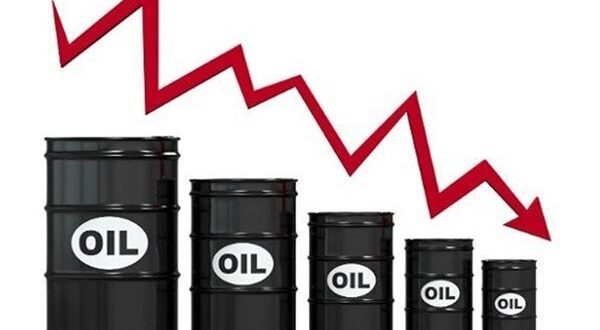Today many of the world’s major cities remain under lockdowns while their respective government is implementing work-from-home schemes. This has dramatically reduced the number of cars on the streets and cut the demand from the transportation sector.
With WTI hovering around $10 and Brent on $20 a barrel, oil-producing nations are feeling the pinch.
When planning their annual budget no government predicted such a bleak situation and oil-producing nations planned their budgets on higher than real prices, as a result, they are facing fiscal deficits.
Global oil demand for oil is down by as much as 30 million barrels a day, a 30 percent reduction.
IMF predicts West Asian economies to contract this year. Vulnerabilities are high in certain countries with high levels of unemployment and low growth, said Jihad Azour, the IMF’s Middle East and Central Asia director.
Most nations are turning to their state-owned investment vehicles commonly referred to as the Sovereign Wealth Fund (SWF) designed to buffer oil price shocks. Today’s situation shows the need for economic diversification among oil-producing nations.
The private oil producers, on the other hand, are either shutting down or reducing production levels and freezing new drilling projects for the time being.
In the Islamic Republic, a fund called the National Development Fund of Iran (NDFI) was founded in 2011. SWF’s real assets are not officially declared and in this piece, I will quote news agencies and other unofficial sources.
NDFI is reportedly worth $91 billion. On April 6, Iran’s Supreme Leader Ayatollah Ali Khamenei approved the withdrawal of one billion euros from NDFI to help fight the coronavirus epidemic.
The funds will be used for revamping the funding needs of the overstretched health care system and the unemployment insurance fund. President Hassan Rouhani has thanked the leader for his move on his website and added that the needs will preferably come from domestic products and knowledge-based companies.
However, the US sanctions have eroded the country’s dependence on oil exports.and the impact of the oil price shock will be minimal. Prior to the re-imposition of US sanctions in May 2018, Iran was exporting 2.5 million barrels a day. By most estimates today Iran exports less than 200,000 barrels a day.
Rouhani has said that Iran will not suffer as much as other countries from the oil price plunge as it is less reliant on crude exports. The more countries rely on oil, the greater they suffer. But as our reliance on oil income has decreased, willingly or unwillingly, either by our own will or by the imposition of the enemy, our losses will certainly be less, Rouhani said during a televised meeting.
Iran’s budget for the present year (started March 20, 2020) has been planned with the expectation of export of one million barrels a day with an oil price of $50. This aspect of the budget needs to be revisited due to the extraordinary circumstances created due to the novel coronavirus outbreak.
IMF has warned Iran could face an $18 billion trade deficit in 2020 due to a lack of exports, which could worsen if oil prices stay low.
Russia
Russian newspaper Vedomosti reported last week that a barrel of Russia’s Urals oil, where the price is determined by Brent, not WTI, was trading at $8.48 a barrel, the lowest since 1998. The current Russian budget is calculated at an oil price of $42 a barrel.
Two-thirds of Russia’s export earnings and 40 percent of its budget is generated by oil sales.
Earlier this year the Russian Finance Ministry announced Russia could withstand prices as low as $25 a barrel for up to 10 years by drawing on a $150 billion National Wealth Fund to compensate for shortfalls of the fiscal budget. Russia’s NWF has risen to $151.35 billion after the Finance Ministry channeled extra oil and gas revenues from 2019 to it, Reuters quoted the ministry in March.
Apart from low oil prices, Russia has to deal with the sanctions imposed by the US and EU five years ago with Moscow’s annexation of Crimea in March 2014. The sanctions prohibit long-term financing for some major corporates and ban assistance to Russian oil and gas companies for the Arctic, shale, and offshore projects.
During an annual press conference last month, Russian Prime Minister Vladimir Putin said while there was nothing good about [sanctions] but Our economic – I can say this with full responsibility – has been able to adapt to external shocks, while our national currency has actually become much more stable, even with possible energy price fluctuations.
Russia responded to sanctions in three ways: First tighten the belt, cutting public spending, and forcing banks and major corporations to clean up their balance sheets. Second, it spent trillions of roubles to create domestic substitutes for imported goods, while food imports from the EU were banned to stimulate local production. Third, some income from energy exports diverted to national wealth fund, thanks to the steady rise in oil prices since 2014 Russia saved up to $124b in sovereign wealth fund (seven percent of GDP).
The results have been impressive. All the three levels of Russia’s government ran a budget surplus in 2018 and 2019, and its total public debt is about 15 percent of GDP. The EU average is 80 percent.
Sanctions have hampered FDI from an annual average of $54.5b between 2011 and 2013 to 19.2b between 2015 and 2018.
Saudi Arabia
Saudi Arabia’s fiscal revenues are projected to decline by 25 to 30 percent or about eight percent of the GDP this year impacting fiscal deficits, according to rating agency Moody’s. IMF’s latest World Economic Outlook report has forecast a negative 2.3 percent GDP growth for Saudi Arabia in 2020.
Producing 13 percent of world output Saudi Aramco is the world’s largest oil producer. Since there is no way to audit any information coming out of Aramco, the world is left to guess the actual breakeven cost. According to IMF March 9 report, the fiscal breakeven price of Saudi crude is around $80 per barrel.
Saudi Crown Prince Mohammed bin Salman’s Vision 2030 will need to be shelved for delays amid low oil prices, political instability in light of the recent crackdown by MBS amid a coup threat within the Saudi royal family and high unemployment amongst its youth.
Such instability does not encourage FDI and can put the Aramco IPO on hold for longer.
Founded in 1971 the Public Investment Fund (PIF) Saudi Arabia’s SWF, with estimated assets of $320 billion. Instead of bracing for a shock, the Saudi SWF went on a spending spree recently. Last week it built a $200 million stake in Norway’s largest crude producer Equinor. In the past, PIF has bought shares in Uber and Telsa, as well as European oil firms Royal Dutch Shell, Total, and Eni.
Saudi Arabia’s oil industry accounts for 70 percent of the country’s export earnings and half of GDP. According to Forbes magazine, Saudi Arabia has approximately $500 billion in the SWF and the Saudis have the cash to ride out the low oil prices. With oil at the present price, hovering less than $10 a barrel the kingdom is set to take a loss of $40 billion annually from total revenues.
With over one million people employed in its oil industry, the government will have to increase spending from its SWF. Given the population’s reliance on social programs, Saudi Arabia faces internal unrest if cuts run too deep.
Iraq
After Saudi Arabia, Iraq is OPEC’s second-largest exporter. With 90 percent of government spending coming from oil revenues, the Iraqi government employs nearly eight percent of the country’s population.
Iraq does not have an SWF like many of its counterparts in West Asia. Essential public services like healthcare, education, and policing, among others do not exist. If the present situation persists one can expect the return of more social unrest.
Norway
Producing two percent of global output, Norway does not plan output cuts because its oil production remains profitable despite the recent plunge, the country’s Minister of Petroleum and Energy Tina Bru told a private local broadcaster.
A number of Norwegian fields would be profitable even at $10 per barrel, Bru said, adding unilateral action by Norway would not impact oil prices.
However, 10 exploration wells have been put on hold amid low oil prices.
Norway’s $930 billion SWF lost $114 billion in the first quarter amid the virus outbreak, reports Reuters.
Other producers
Qatar has a fiscal surplus and its economy is dependent on liquified natural gas exports, so less directly affected by oil prices, while the debt-burdened economies of small oil producers Oman and Bahrain are more vulnerable to price swings.
Mexican President Andres Manuel Lopez Obrador said on Tuesday Mexico will take more austerity measures in the face of an oil price collapse. He vowed no layoffs of government employees according to Reuters.
Africa’s fastest-growing economy Nigeria is also Africa’s largest country with a population of 205 million. With oil making nine percent of GDP, Nigeria has a break-even oil price of $57. Oil accounts for over 90 percent of exports, a third of banking sector credit, and half of the government revenues.
IMF expects unemployment will rise by 25 percent to approximately 25 million people in 2020, up from 20 million people in 2018.
Nigeria has a small SWF of approximately $2 billion that will be used spending to keep figures falling in the red zone.
 Iran Energy News Oil, Gas, Petrochemical and Energy Field Specialized Channel
Iran Energy News Oil, Gas, Petrochemical and Energy Field Specialized Channel




